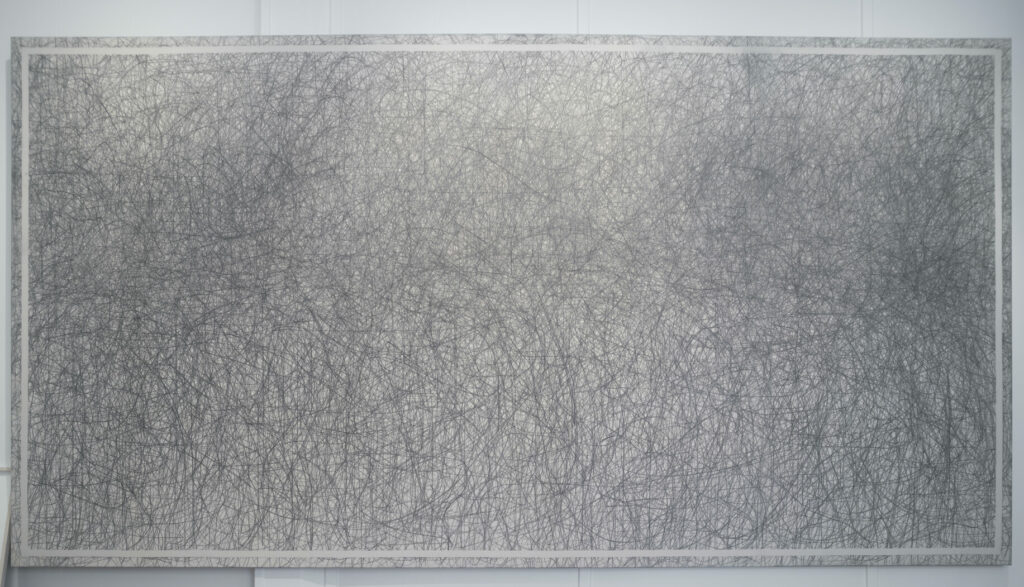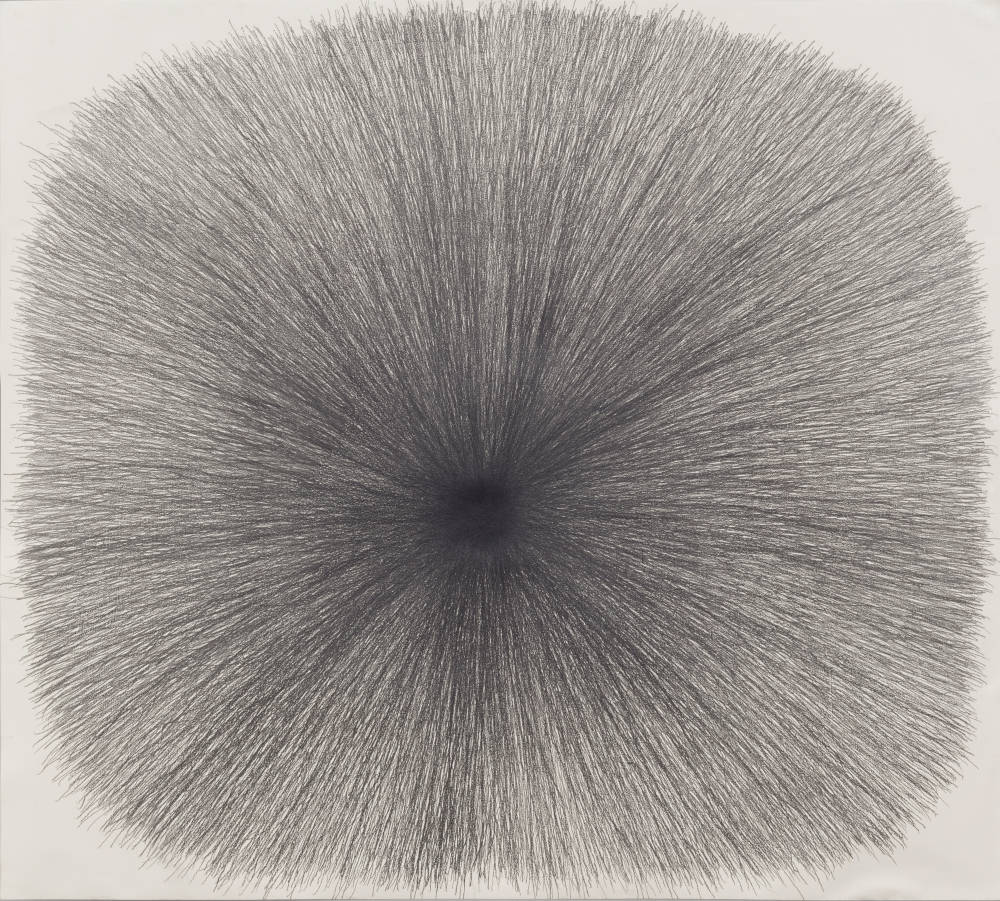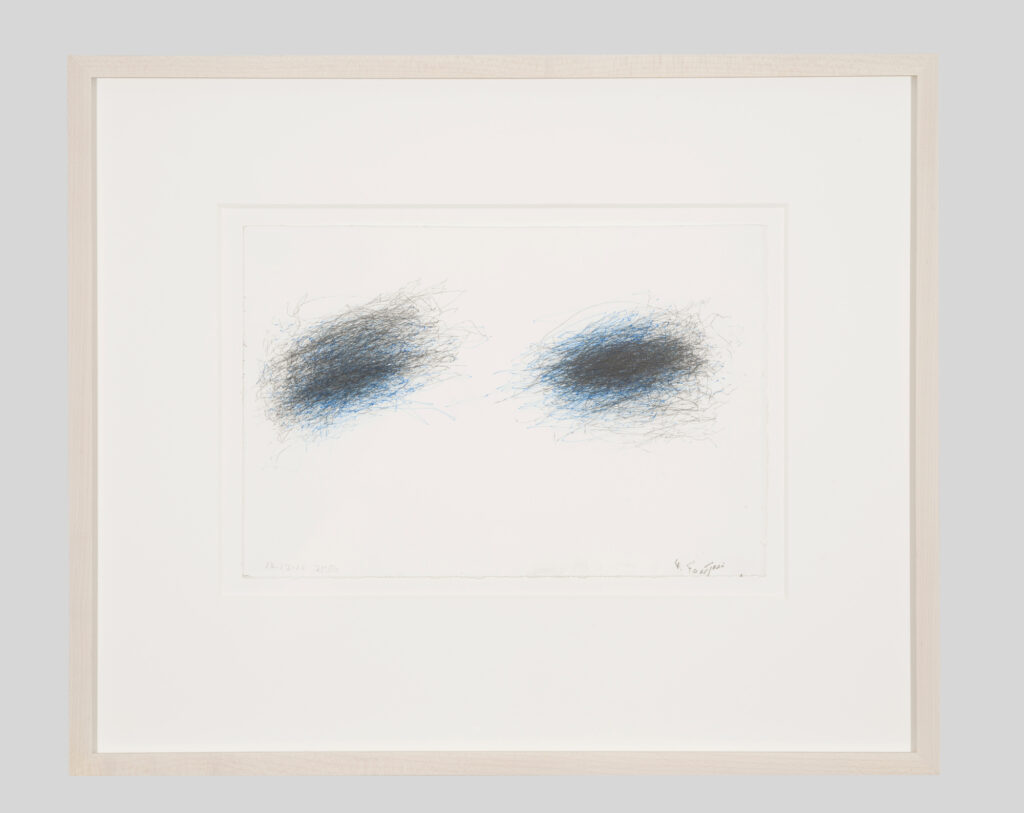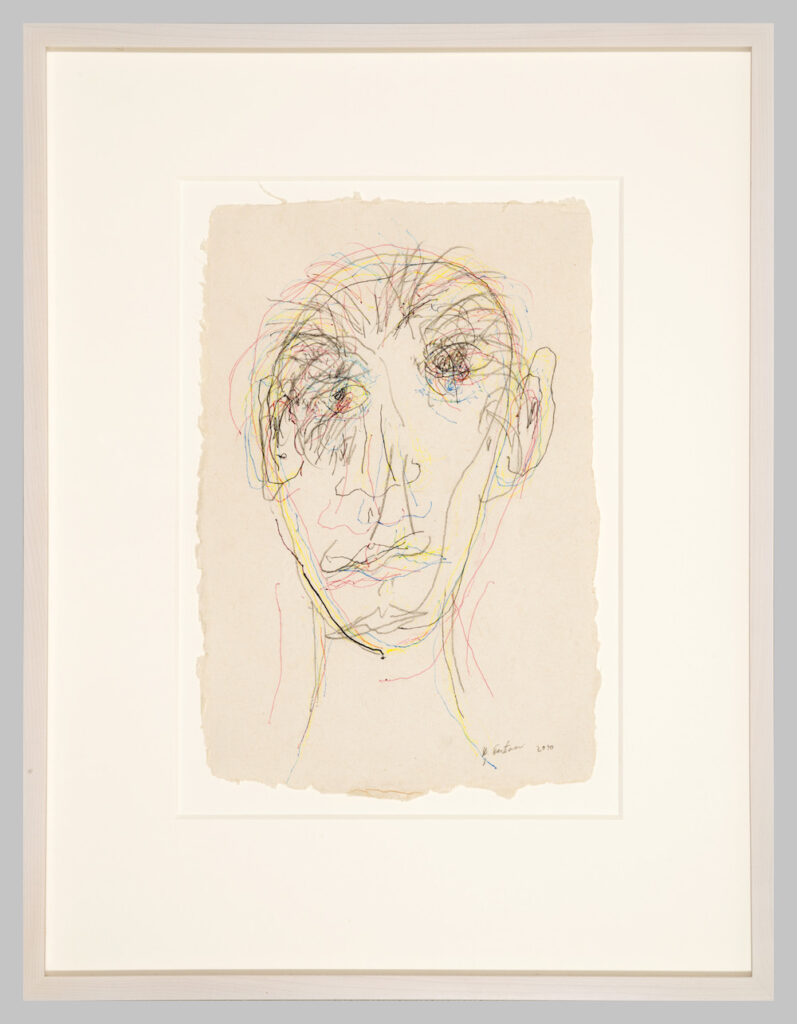William Anastasi
William Anastasi (born in 1933) has built up a body of work that is fundamental to the formation of conceptual art, while remaining a separate figure in this movement. From 1963 to the present day, he has elaborated multiple protocols of blind drawings: the Blind Drawings or Unsighted Drawings. As diverse as they are, these protocols have a single goal: to allow the artist to remove himself from any artistic technique, from any aesthetic reference and, if possible, from his own consciousness.
Each of these protocols aims to automate more or less rigorously the artist’s gesture. The Walking Drawings series, which is one of the artist’s earliest works in this field, is a case in point. It was initiated in Philadelphia in the early 1960s, before Anastasi moved to New York where he has lived ever since. Each Walking Drawing follows the following protocol: in one hand the artist holds a notepad, in the other a pen, a colored marker, a pencil, etc., whose tip is in contact with the paper. The artist walks to a chosen destination and then returns to the starting point without looking at the paper. Like a seismograph, the hand that holds the pen records the movements of the walking body during the whole journey. The result of this movement alone, that is to say of an external energy, the drawing obtained is the reflection of no aesthetic prejudice, of no conscious project. It illustrates only its own process of creation, as well as the time and space in which it was executed.
In his Burst Drawings, Anastasi draws lines from the center of a large sheet of paper mounted on the wall. Standing in front of it, blindfolded, Anastasi holds a piece of chalk in her outstretched arm and moves away from the center. The stretching of the line is limited to the reach of his arm and extends in all directions. The resulting compression of the lines looks like an explosion.
The series of Blind Self Portraits is made without a mirror, with closed eyes, simply from memory. These blind self-portraits do not give access to any interiority, to any reality. They only express the nonsense of the chance that presided over their creation, the distance that separates them from their model, thus leading to a critique of representation. The automatic, repetitive, objective nature of this process is highlighted here by the numerous reiterations of the pencil and pen drawing.




